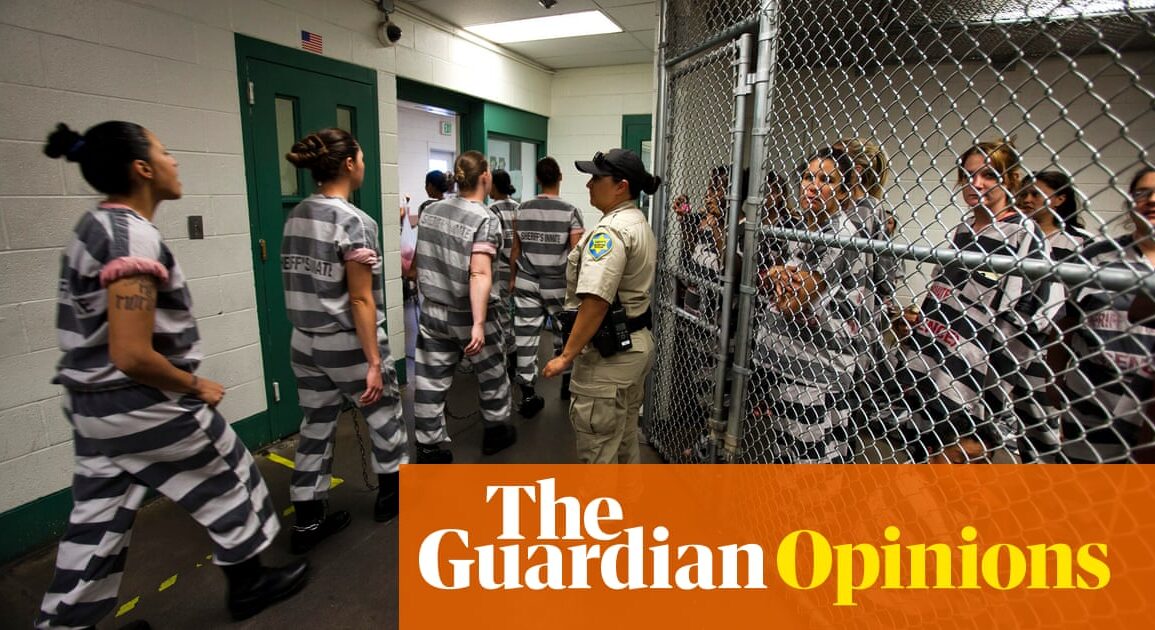
Almost immediately after I was sent to prison, I was assigned to a “program”, the term American prison officials use for a job. I was to sweep the prison hallways, alongside roughly 30 other men. Together we pushed brooms across gray corridors hour after hour, day after day.
No matter how many hours I worked, I couldn’t afford toilet paper, soap or toothpaste. We had to pay for basic hygiene products at exploitative markups, way more than they cost in free society, and I was paid 10 cents an hour. To survive in prison, even with a full-time job, I was forced to rely on family, who struggled to support me financially.
There’s a misleading narrative pushed by officials about prison labor, one that falsely frames prison jobs as rehabilitative. Nothing could be further from the truth.
In prison, my work was meaningless and dehumanizing. It conveyed no new skills, taught me no life lessons and earned me next to nothing. It did not build my résumé, prepare me to navigate workplace relationships or teach me how to budget. It served only to devalue my labor and person. Prisons are about punishment, not rehabilitation.
I had no choice in whether I went to work or not – and there were no sick days. If I didn’t go, I would be locked in my cell for 23 hours a day. And as little as it was, I needed the pay.
About halfway through my sentence, I had the chance to apply to the Bard Prison Initiative (BPI), one of the most renowned and rigorous college-in-prison programs in the US. The opportunity changed the trajectory of my life. Graduating from Bard College with my bachelor’s degree gave me something that no one could take away: an education. It was a hard-won prize, especially given the system’s intent to let me languish.
Sitting in those classrooms better prepared me for work outside. Engaging with other students prepared me to later engage with co-workers; interacting with professors prepared me to deal with supervisors. Alongside classes in philosophy, political economy and differential equations, I was learning valuable social and professional skills that were radically at odds with the reality of prison.
It costs New York around $70,000 a year in taxpayer money to imprison someone. It costs the BPI about $10,000 a year to educate an incarcerated student. New York’s recidivism rate is 40%, while graduates of the BPI and similar programs recidivate at only 4%, a tenfold decrease. Yet, despite its clear positive record, only 300 of New York’s 30,000 incarcerated people are enrolled at the BPI in any given semester. I was one of a lucky few.
Prisons are designed to warehouse, traumatize and exploit people, then send them back home in worse shape than when they entered the system. Despite having worked every day, the vast majority of people are released with no job experience, no references and no hope. Some would take this to mean that the system is failing. And it is with regard to public safety, rehabilitation and justice, but it’s horrifyingly successful at two things: guaranteeing jobs for some and perpetuating slavery for others.
Over the years, I learned that prison officials were not interested in giving us fruitful educational and job opportunities that allowed us to go home and stay home. The reality is much more sinister. Prisons are a job program for officers that requires us to keep coming back.
after newsletter promotion
You may be familiar with company towns and coal towns; in the US, we have prison towns, too. In New York, all state prisons were built upstate as economic stimuli in rural districts and failing farm communities. The facilities imprison predominantly Black and brown inner-city residents who toil under a class of white overseers. I remember a guard bending over to shackle me one day and saying, “I just want to thank you for being here because I’m too old to be digging ditches.” My body and my labor made him an easy living. The parallels to slavery are stark and visceral.
Prison officials ignore these critiques and justify their practices by pointing to the exception in the 13th amendment of the US constitution – negotiated as a concession to slave states – that allows slavery “as a punishment for crime”. This exception enables states like Texas to force incarcerated people, mostly Black men, to pick cotton – even at a net loss to the state, because cruelty is the point.
Thankfully, a new abolition movement is working to end this exception, and I hope for its success. Over the past few years, seven states – from Tennessee and Alabama to Oregon and Vermont – have voted to end the exception in their state constitutions. And earlier this year, just ahead of Juneteenth, Senators Jeff Merkley and Cory Booker and Congresswoman Nikema Williams introduced the abolition amendment in Congress to end the exception in the US constitution and outlaw the enslavement of incarcerated people. Today it has bipartisan support.
After 12 years, I was released with $40 and a bus ticket. The state did not even give me an ID. But I was one of the lucky ones who went home with a college degree. Without it, I would probably be back in prison today. I understand the value of giving incarcerated people real opportunities. Enslaving people is diametrically opposed to it. Nothing good can come from it.
-
Dyjuan Tatro is the senior government affairs officer at the Bard Prison Initiative, where he focuses on expanding college access for incarcerated people, and an #EndTheException ambassador
This post was originally published on this site be sure to check out more of their content.









